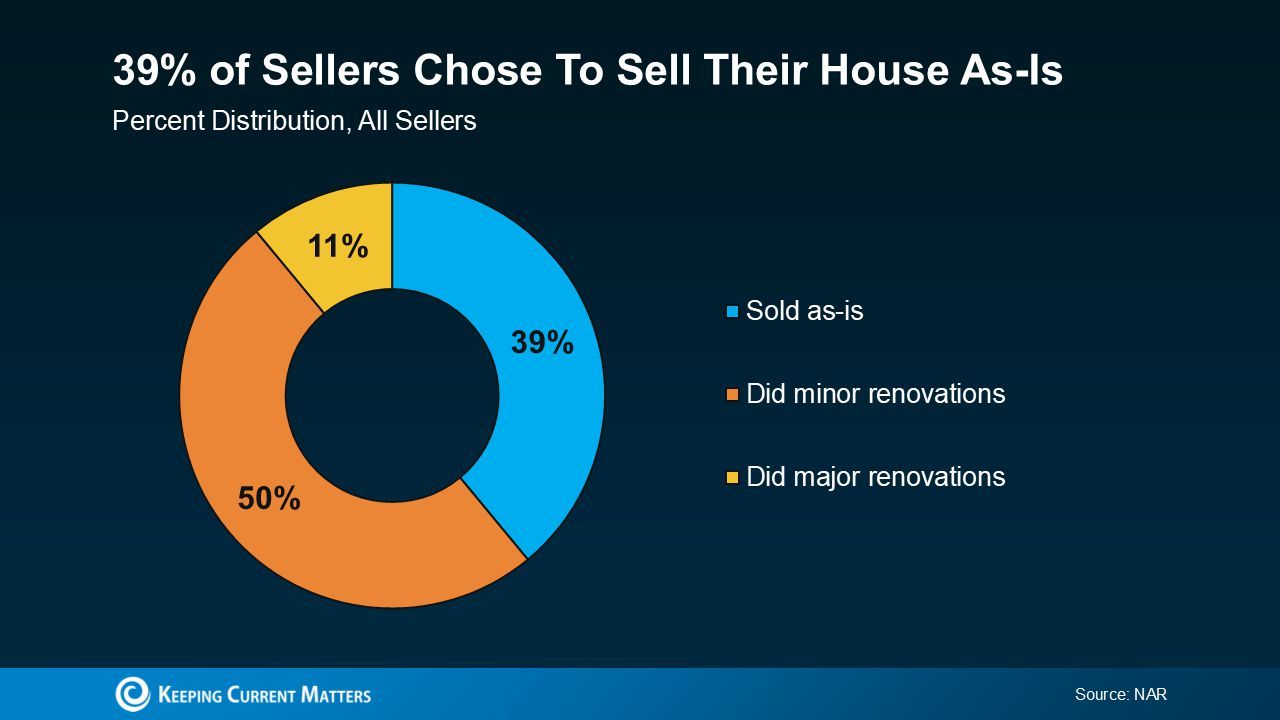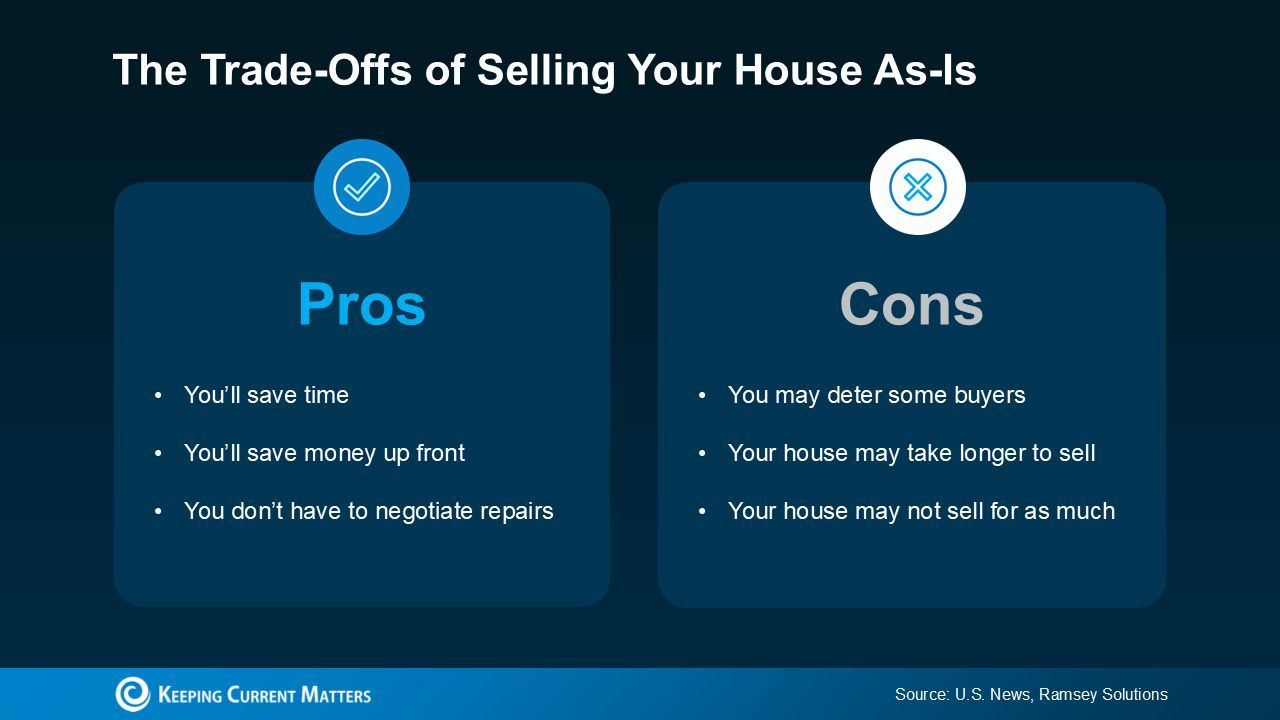Should You Sell Your House As-Is or Make Repairs?

Deciding whether to sell your home as-is or invest in repairs is a common dilemma for homeowners. According to the National Association of Realtors (NAR), most sellers (61%) make at least minor repairs before listing their homes. However, life doesn’t always allow for those updates, and that’s why 39% of sellers choose to sell as-is instead.
Chart: Percentage of Sellers Making Repairs vs. Selling As-Is

If you’re feeling overwhelmed by the prospect of repairs due to time or budget constraints, selling as-is may seem like the easiest option. But before making a decision, it’s essential to understand what selling as-is entails and weigh the pros and cons.
What Does Selling As-Is Really Mean?
When you sell your house as-is, you’re essentially telling buyers: “What you see is what you get.” This means:
- You won’t make any repairs or updates before the sale.
- You won’t negotiate fixes after the buyer’s inspection.
While this approach can save you time and effort, it comes with trade-offs. Here’s a quick breakdown of the pros and cons:
Visual: Pros and Cons of Selling As-Is

Pros:
- Faster and easier sale process.
- Lower upfront costs since no repairs are required.
- Appeals to buyers looking for a bargain.
Cons:
- Fewer interested buyers.
- Longer time on the market.
- Lower sale price compared to updated homes.
Selling As-Is vs. Making Repairs: What to Expect
Homes that are move-in ready often sell for more because buyers are willing to pay a premium for convenience. If you sell your house in its current condition, you might face:
- Fewer offers: Less interest from buyers can reduce competition.
- Longer time to sell: Buyers may hesitate over potential repair costs.
- Lower sale price: An as-is home typically sells for less than a comparable updated home.
However, this doesn’t mean your home won’t sell. In today’s market, 56% of buyers surveyed are open to purchasing a home that needs some work. With affordability still a challenge and limited inventory available, some buyers are willing to take on a fixer-upper if the price is right.
Chart: Percentage of Buyers Willing to Buy Fixer-Uppers
(Include a bar graph showing 56% of buyers open to homes needing repairs.)
How an Agent Can Help You Decide
To make the best decision, work with an experienced real estate agent. Here’s how they can help:
- Market Analysis:
An agent can provide insights into what comparable homes in your area are selling for, whether they were sold as-is or with updates. - Pricing Guidance:
They’ll help you determine a fair price for your home, accounting for its current condition and any potential upgrades you might consider. - Maximizing Appeal:
If you sell as-is, your agent will highlight your home’s best features – such as location, layout, or lot size – to ensure buyers see its potential, not just the projects. - Strategic Marketing:
Your agent will craft a tailored marketing plan to attract the right buyers, whether your home is updated or sold as-is.
Bottom Line
Selling your house as-is is a viable option, but it comes with trade-offs like fewer offers and a potentially lower sale price. On the flip side, investing in repairs can yield a higher return but requires time and resources.
To make an informed choice that aligns with your goals and circumstances, consult a local real estate agent. They’ll guide you through the process, help you weigh your options, and ensure you achieve the best possible outcome.
Categories
Recent Posts










GET MORE INFORMATION

REALTOR® | Lic# S.0184988
